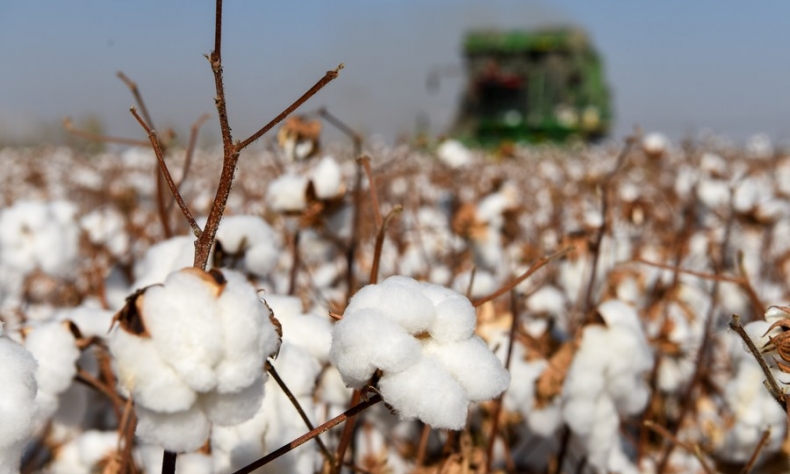Ban on Xinjiang to Have Little Effect

As long as China maintains social stability, the sanctions against Xinjiang cotton will have little effect on the Chinese economy.
Recently, the Chinese have started to boycott several foreign companies that are refusing to use cotton from Xinjiang Uygur Autonomous Region. These companies alleged that Xinjiang cotton is a product of “forced labor.”
The Ministry of Foreign Affairs has responded to the allegations, pointing out that cotton-picking is a high-paying work. Additionally, the pickers sign labor contracts with the planters voluntarily after negotiation, which is certainly not the mark of “forced labor.” The malicious lies were in fact conjured up by anti-China forces in an attempt to smear China and undermine security and stability in Xinjiang.
Some Western politicians and media outlets regard Xinjiang as China’s weak link. They think if sanctions are imposed on its cotton industry, one of the pillars of the region’s economy, they can strike at China’s cotton and textile sector and frustrate China’s development.
Some countries have also declared “sanctions” on some Chinese officials and entities over the concept of “forced labor.” The U.S. has banned the import of cotton and cotton products from Xinjiang and added some Xinjiang enterprises to a trade blacklist. What their actions will actually achieve is a disruption of the global supply chains and an increase in cotton prices in the U.S. and Europe.
In the past, the economy of Xinjiang was highly dependent on the transfer payment by the Central Government—allocating tax refunds and grants to the less developed regions to ensure balanced regional development and equal and universal public service. However, the key to the sustainable development of local economies and societies is to develop competitive local industries.
When the People’s Republic of China was established in 1949, farming and animal husbandry were the mainstay of Xinjiang’s economy. Productivity was low and the mode of production was outdated. Development was stalled and the people lived in poverty. Xinjiang’s cotton output at that time was 5,100 tons, only 1.1 percent of the national total.
Since the 1990s, cotton production in Xinjiang has accelerated. In 2020, output reached 5.16 million tons, accounting for 87 percent of the national total. From 2012 to 2020, the proportion increased by 33 percentage points.
Although China is the third largest cotton producer in the world, it is also a leading cotton importer due to its vast population. The import volume increased from 1.16 million tons in 2017 to 2.16 million tons in 2020. Domestic cotton consumption was 8.02 million tons in 2020, of which Xinjiang cotton accounted for 64 percent. So if some Western countries ban Xinjiang cotton, it can be easily consumed within China.
China can adjust its supply chains, encouraging cotton growers in Xinjiang and textile manufacturers to sell their products on the domestic or other non-U.S. foreign markets.
China’s clothing and related industries provide jobs to millions and have increased overall exports. The country has been the largest exporter of textile products for decades. However, its export of textiles and apparel to the U.S. has dwindled in recent years.
The U.S. accounted for about 17 percent of China’s textile and apparel exports in 2019, but the figure dropped to about 15 percent in 2020. Therefore, even if the U.S. takes the extreme measure of banning all Chinese textile and garment imports, it won’t destroy the industries.
According to the U.S. Department of Agriculture’s latest monthly Cotton and Wool Outlook report released on March 11, both the cotton production and consumption in China are expected to grow this year with improved yield in Xinjiang.
As long as China maintains social stability, the sanctions against Xinjiang cotton will have little effect on the Chinese economy. Though a number of other countries and regions may follow the U.S. lead and take similar action, they cannot cause much damage to China’s cotton and textile industry.
The writer is a researcher with the Chinese Academy of International Trade and Economic Cooperation.
 Facebook
Facebook
 Twitter
Twitter
 Linkedin
Linkedin
 Google +
Google +










